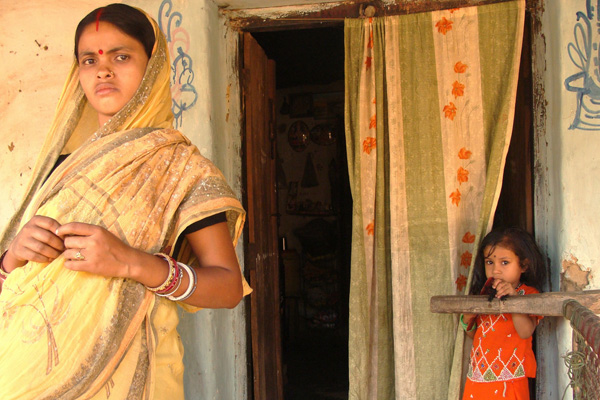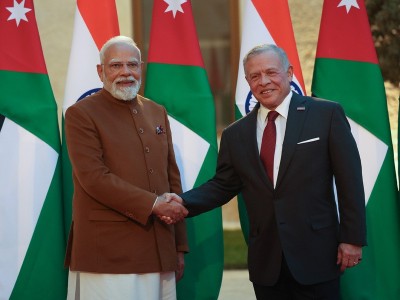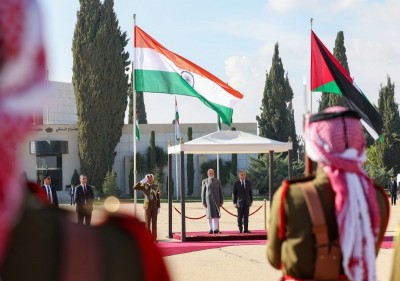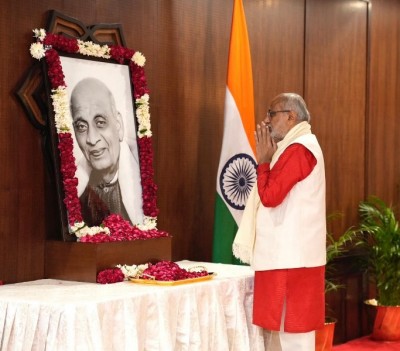
271 million people moved out of poverty in India, says UNDP
New Delhi, Sept 21 (IBNS): India has made momentous progress in reducing multidimensional poverty, according to estimates from the 2018 global Multidimensional Poverty Index (MPI) released on Thursday by the United Nations Development Programme (UNDP) and the Oxford Poverty and Human Development Initiative (OPHI).
The incidence of multidimensional poverty has almost halved between 2005/6 and 2015/16, climbing down to 27.5 percent from 54.7 percent.
Among South Asian countries, only Maldives has a lower headcount ratio than India at 1.9 percent, with Nepal (35.3 percent), Bangladesh (41.1 percent), and Pakistan (43.9) having higher incidences of multidimensional poverty.
Though the traditionally disadvantaged groups – across states, castes, religions, and ages –are still the poorest, they have also experienced the biggest reductions in MPI through the decade, showing that they have been “catching up”.
This is in line with global trends, where deeper progress among the poorest groups is reflected in the global MPI being cut by half.
The MPI looks beyond income to understand how people experience poverty in multiple and simultaneous ways. It identifies how people are being left behind across three key dimensions: health, education and living standards, and 10 indicators – nutrition, child mortality, years of schooling, school attendance, sanitation, cooking fuel, drinking water, electricity, housing and assets.
Those who are deprived in at least a third of the MPI’s components are defined as multidimensionally poor.
The 2018 report, which is now closely aligned with the Sustainable Development Goals, cover almost three-quarters of the world’s population.
The 2015-16 district-level calculations of the incidences of multidimensional poverty for India has been sourced from the National Family Health Survey IV. The data for 2005-06 is from the National Family Health Survey III.
Despite the massive gains made in reducing multidimensional poverty, 364 million Indians continue to experience acute deprivations in health, nutrition, schooling and sanitation. Just over one in four multidimensionally poor people in India are under ten years of age. In 104 primarily low and middle-income countries, 662 million children are considered multidimensionally poor. In 35 countries half of all children are poor.
The 2018 MPI data and report is available on the OPHI website and HDRO website.
There are promising signs that poverty can be tackled.
The latest figures paint a stark picture of just how many are still left behind by development, but they also demonstrate that progress can happen quickly with the right approach.
Globally, some 1.3 billion people live in multidimensional poverty, which is almost a quarter of the population of the 104 countries for which the 2018 MPI is calculated. Of these 1.3 billion, almost half - 46 percent - are thought to be living in severe poverty and are deprived in at least half of the dimensions covered in the MPI.
But while there is much to be done, there are promising signs that such poverty can be - and is being - tackled. In India, the first country for which progress over time has been estimated, 271 million people moved out of poverty between 2005/06 and 2015/16. The poverty rate here has nearly halved, falling from around 55 percent to around 28 percent over the 10-year period.
“Although the level of poverty – particularly in children – is staggering so is the progress that can be made in tackling it. In India alone some 271 million have escaped multidimensional poverty in just 10 years,” said Achim Steiner, UNDP Administrator. “The Multidimensional Poverty Index gives insights that are vital for understanding the many ways in which people experience poverty, and it provides a new perspective on the scale and nature of global poverty while reminding us that eliminating it in all its forms is far from impossible.”
Although similar comparisons over time have not yet been calculated for other countries, the latest information from UNDP’s Human Development Index – released last week – shows significant development progress in all regions, including India. Since 1990, life expectancy increased by almost 4 years in South Asia (almost 11 years in India). This bodes well for improvements in multidimensional poverty.
Over half of all multidimensionally poor in India live in the four poorest states
Pockets of poverty are found across India, but multidimensional poverty is particularly acute – and significant – in the four states of Bihar, Jharkhand, Uttar Pradesh and Madhya Pradesh. These accounted for 196 million MPI poor people – more than half of all MPI poor in India.
But there was also progress. Jharkhand made the biggest strides among all states in reducing multidimensional poverty, with Arunachal Pradesh, Bihar, Chhattisgarh, and Nagaland only slightly behind.
Delhi, Kerala and Goa have the lowest incidence of multidimensional poverty.
Across nearly every state, poor nutrition is the largest contributor to multidimensional poverty. Not having a household member with at least six years of education is the second largest contributor. Insufficient access to clean water and child mortality contribute least. Relatively fewer people living in poverty experience deprivations in school attendance – a significant gain.
“The MPI demonstrates the tremendous strides India has made, and continues to make, in reducing poverty. It is especially encouraging that traditionally disadvantaged groups are catching up the fastest. Not only is this in line with the core philosophy of the Sustainable Development Goals to reach the farthest first, it is also reflected in Prime Minister Narendra Modi’s development pledge of Sabka Saath, Sabka Vikas,” said Francine Pickup, UNDP India Country Director.
The 2018 MPI is available for 1,101 subnational regions showing within-country variations in multidimensional poverty levels for 87 countries.
“The Multidimensional Poverty Index is a powerful tool for examining global poverty and communicating useful facts. Not only does it allow us to understand how different countries are faring in their fight against poverty, but it helps us to better understand who the poor are, where they are and the many different ways in which they experience poverty,” said Sabina Alkire, OPHI Director.
Traditional poverty measures – often calculated by numbers of people who earn less than $1.90 a day – shed light on how little people earn but not on whether or how they experience poverty in their day-to-day lives. The MPI provides a complementary picture of poverty and how it impacts people across the world.
“The Sustainable Development Goals call to eradicate poverty in all its forms everywhere. The Multidimensional Poverty Index helps answer that call, providing immensely valuable information for all those seeking to understand what poverty looks like for a particular place or group of people, and for those working on the policies to help people escape poverty now and into the future.”, said Selim Jahan, Director of the Human Development Report Office at UNDP.
While the MPI’s core data look at those who are poor, and the subset who are severely poor, the numbers also look at those very close to becoming poor. These people, while not quite multidimensionally poor, are living precariously and struggling to remain above the poverty line.
The data show that in addition to the 1.3 billion classed as poor, an additional 879 million are at risk of falling into multidimensional poverty, which could happen quickly if they suffer setbacks from conflict, sickness, drought, unemployment and more.
Image: File shot
Support Our Journalism
We cannot do without you.. your contribution supports unbiased journalism
IBNS is not driven by any ism- not wokeism, not racism, not skewed secularism, not hyper right-wing or left liberal ideals, nor by any hardline religious beliefs or hyper nationalism. We want to serve you good old objective news, as they are. We do not judge or preach. We let people decide for themselves. We only try to present factual and well-sourced news.







